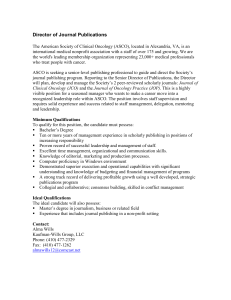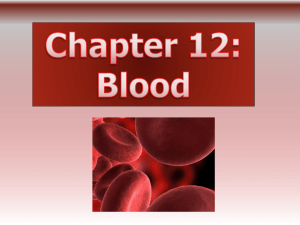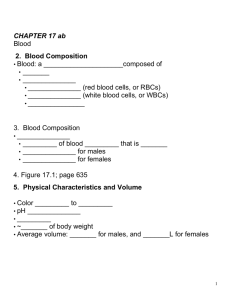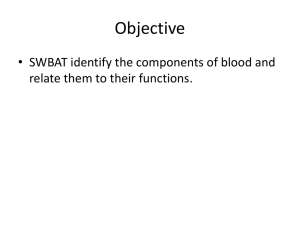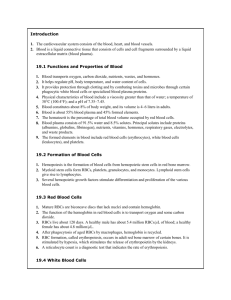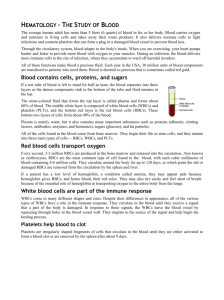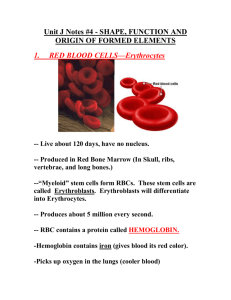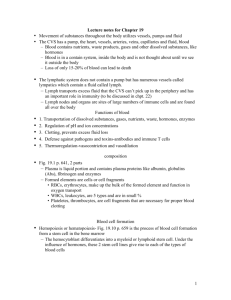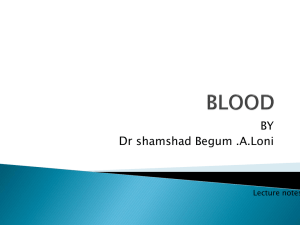Understanding Blood Tests
advertisement
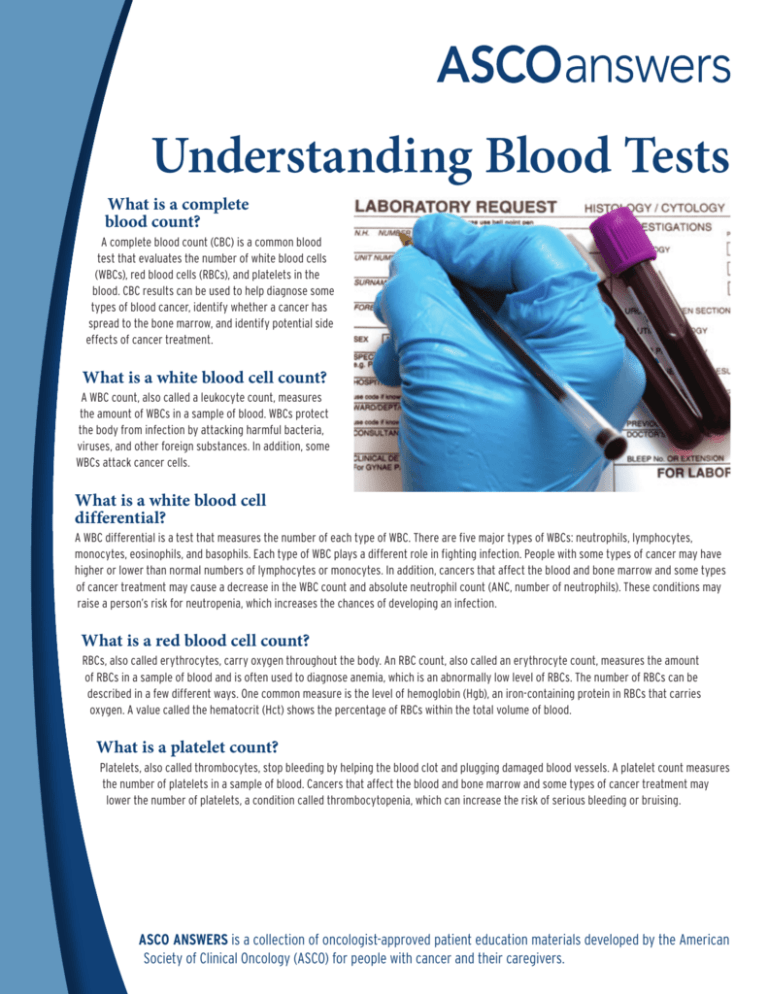
Understanding Blood Tests What is a complete blood count? A complete blood count (CBC) is a common blood test that evaluates the number of white blood cells (WBCs), red blood cells (RBCs), and platelets in the blood. CBC results can be used to help diagnose some types of blood cancer, identify whether a cancer has spread to the bone marrow, and identify potential side effects of cancer treatment. What is a white blood cell count? A WBC count, also called a leukocyte count, measures the amount of WBCs in a sample of blood. WBCs protect the body from infection by attacking harmful bacteria, viruses, and other foreign substances. In addition, some WBCs attack cancer cells. What is a white blood cell differential? A WBC differential is a test that measures the number of each type of WBC. There are five major types of WBCs: neutrophils, lymphocytes, monocytes, eosinophils, and basophils. Each type of WBC plays a different role in fighting infection. People with some types of cancer may have higher or lower than normal numbers of lymphocytes or monocytes. In addition, cancers that affect the blood and bone marrow and some types of cancer treatment may cause a decrease in the WBC count and absolute neutrophil count (ANC, number of neutrophils). These conditions may raise a person’s risk for neutropenia, which increases the chances of developing an infection. What is a red blood cell count? RBCs, also called erythrocytes, carry oxygen throughout the body. An RBC count, also called an erythrocyte count, measures the amount of RBCs in a sample of blood and is often used to diagnose anemia, which is an abnormally low level of RBCs. The number of RBCs can be described in a few different ways. One common measure is the level of hemoglobin (Hgb), an iron-containing protein in RBCs that carries oxygen. A value called the hematocrit (Hct) shows the percentage of RBCs within the total volume of blood. What is a platelet count? Platelets, also called thrombocytes, stop bleeding by helping the blood clot and plugging damaged blood vessels. A platelet count measures the number of platelets in a sample of blood. Cancers that affect the blood and bone marrow and some types of cancer treatment may lower the number of platelets, a condition called thrombocytopenia, which can increase the risk of serious bleeding or bruising. ASCO ANSWERS is a collection of oncologist-approved patient education materials developed by the American Society of Clinical Oncology (ASCO) for people with cancer and their caregivers. Questions to ask the doctor TERMS TO KNOW Regular communication is important for making informed decisions about your health care. Consider asking the following questions of your health care team: Anemia: An abnormally low level of red blood cells • Does the cancer or my cancer treatment put me at risk for developing side effects like neutropenia, anemia, or thrombocytopenia? • What blood tests should I have? And what will the results tell you about my health? • How and where is this test done? • Should I avoid eating and drinking before the test? If so, for how long? • What do the test results mean? Who will explain the test results to me? • If my results are within the normal range, what are the next steps? • If my results are outside the normal range, what are the next steps? • What are my treatment options if I have neutropenia, anemia, or thrombocytopenia? • How do these test results compare with my previous results? • Will I need additional tests? If so, when? • Whom should I call with questions or problems? • Is there anything else I should be asking? Find additional information about blood-related conditions at www.cancer.net/sideeffects. The ideas and opinions expressed here do not necessarily reflect the opinions of the American Society of Clinical Oncology (ASCO) or The Conquer Cancer Foundation. The information in this fact sheet is not intended as medical or legal advice, or as a substitute for consultation with a physician or other licensed health care provider. Patients with health care-related questions should call or see their physician or other health care provider promptly and should not disregard professional medical advice, or delay seeking it, because of information encountered here. The mention of any product, service, or treatment in this fact sheet should not be construed as an ASCO endorsement. ASCO is not responsible for any injury or damage to persons or property arising out of or related to any use of ASCO’s patient education materials, or to any errors or omissions. To order more printed copies, please call 888-273-3508 or visit www.cancer.net/estore. Bone marrow: Soft, spongy tissue found inside larger bones Growth factors: Substances that help blood cells grow, divide, and mature Laboratory: A facility where medical tests are conducted and evaluated Nadir: Low point, often used in reference to blood cell counts Neutropenia: An abnormally low level of neutrophils Pathologist: A doctor who specializes in interpreting laboratory tests and evaluating cells, tissues, and organs to diagnose disease Phlebotomist: A technician who collects blood samples for evaluation in a laboratory Reference range: A set of values considered normal test results Thrombocytopenia: An abnormally low level of platelets MADE AVAILABLE THROUGH AMERICAN SOCIETY OF CLINICAL ONCOLOGY 2318 Mill Road, Suite 800, Alexandria, VA 22314 | Toll Free: 888-651-3038 | Phone: 571-483-1300 www.asco.org | www.cancer.net | www.conquercancerfoundation.org © 2015 American Society of Clinical Oncology. For permissions information, contact permissions@asco.org. AABT15

